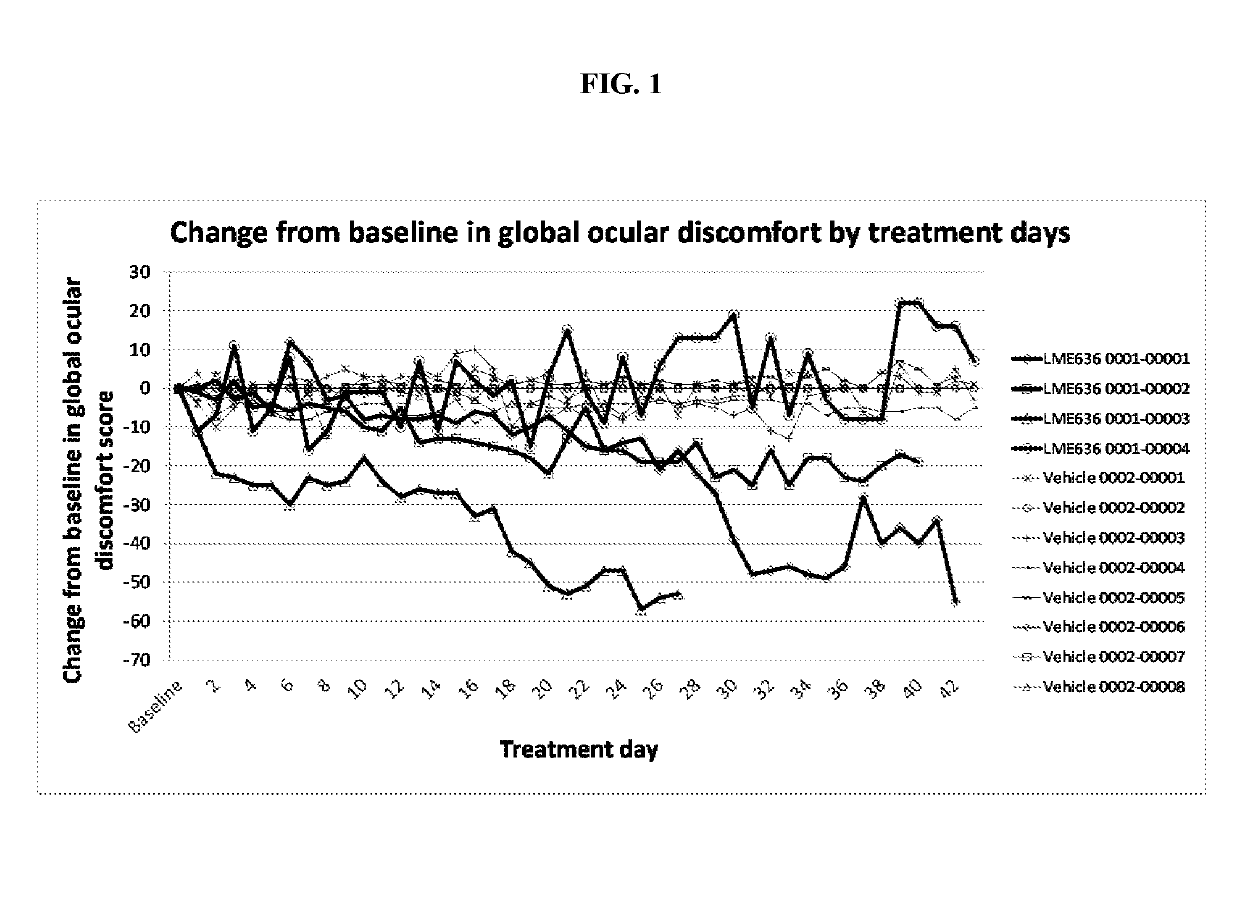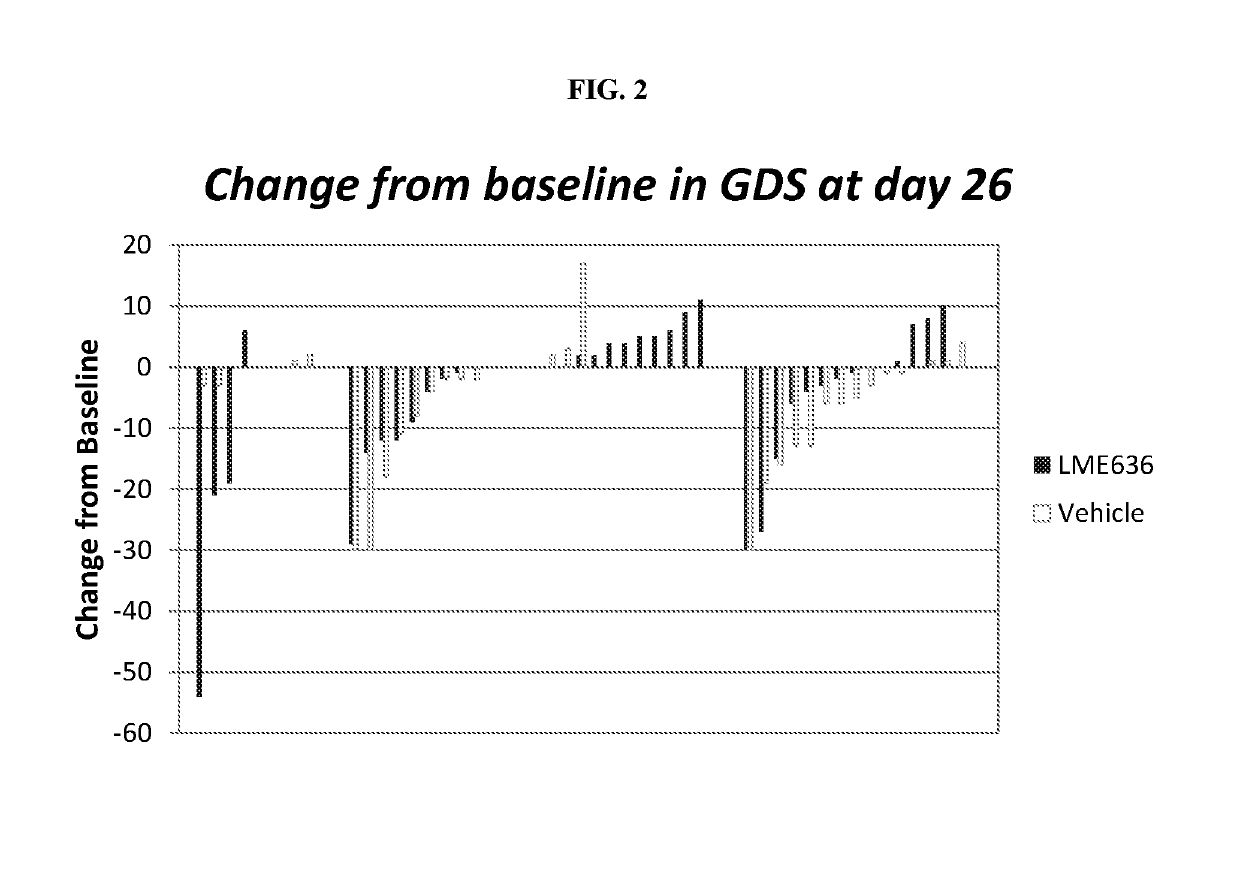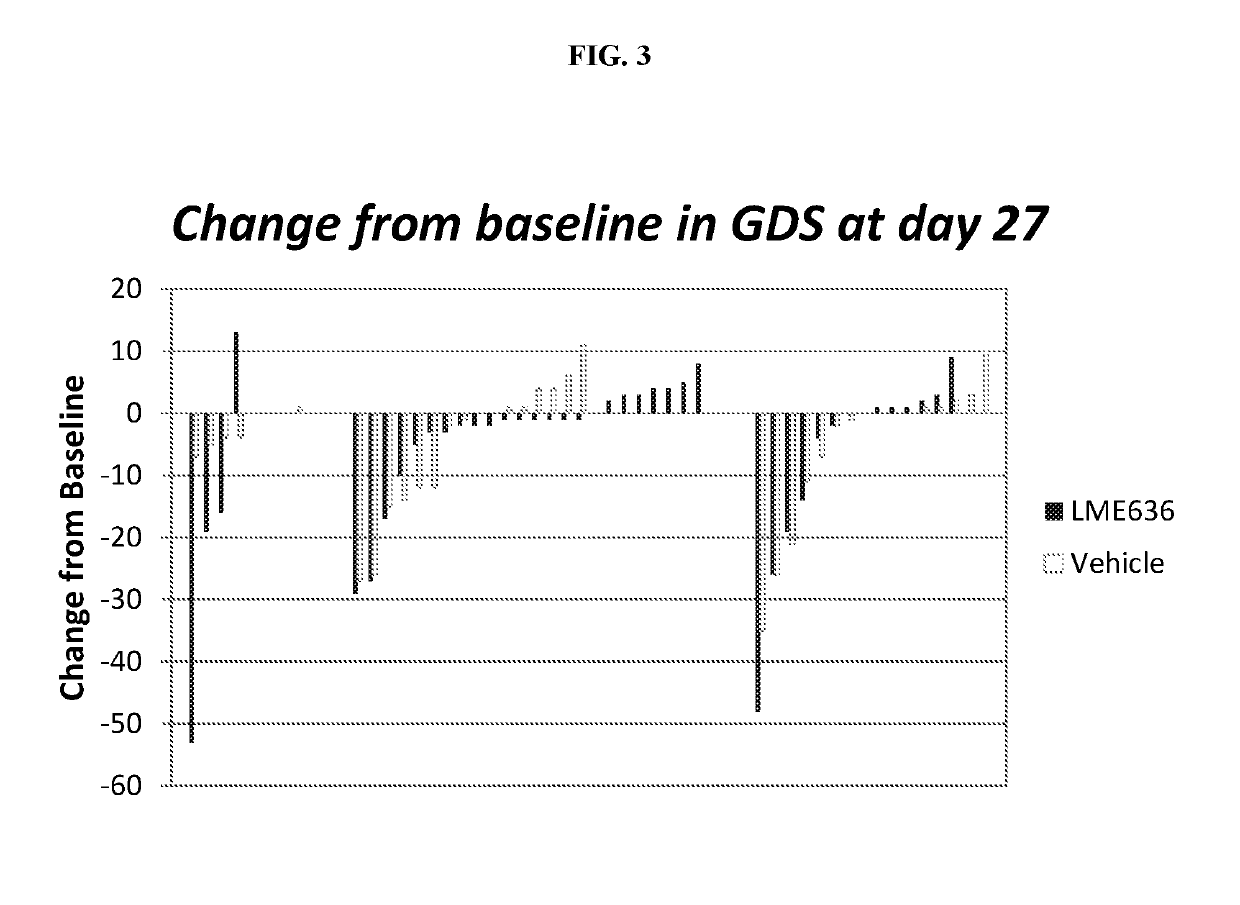Methods of treating dry eye disease using TNF alpha antagonists
a technology of alpha antagonists and dry eye, which is applied in the direction of antibody medical ingredients, drug compositions, peptide/protein ingredients, etc., can solve the problems of inability to fully address the underlying cause, patient burns, persistent irritation, etc., to minimize the risk of tnf antagonism, improve the response, and maximize the effect of benefi
- Summary
- Abstract
- Description
- Claims
- Application Information
AI Technical Summary
Benefits of technology
Problems solved by technology
Method used
Image
Examples
example 1
202A Study: LME636 Improves Signs and Symptoms of Dry Eye Disease
[0143]CLME636X2202A was a proof of concept (PoC) study to evaluate efficacy and safety of topical ocular treatment with LME636 in patients with severe dry eye disease (DED). The primary objective of the PoC study was to demonstrate the efficacy of topically administered LME636 over LME636 vehicle in reduction of ocular symptoms as determined by global ocular discomfort score at treatment day 29. The key secondary objective was to evaluate the percentage of patients with improvement in global ocular discomfort score >20 (responder analysis). DNA samples were collected from the patients with written informed consent, and an exploratory pharmacogenetics analysis was conducted to identify genetic factors that may influence the response to LME636 treatment. The pharmacogenetics analysis is described in Example 2.
[0144]During the treatment phase, 69 patients were randomized to receive LME636 and 65 to receive LME636 vehicle....
example 2
and Method for Pharmacogenetic (PG) Analysis
example 2.1
[0148]A total of 127 patient samples were collected. The patients who met all of the following criteria were included in the pharmacogenetics analysis:[0149]Provided written informed consent for pharmacogenetic study.[0150]DNA was successfully extracted and genotyped.[0151]Included in the analysis of overall clinical study.
[0152]Blood samples from consenting patients were collected at the individual trial sites and then shipped to Pharmaceutical Product Development (Wilmington, N.C. 28401). The genomic DNA of each patient was extracted from the blood by Covance (Indianapolis, Ind. 46214), and genotyping data was generated by Clinical Reference Laboratory (Lenexa, Kans. 66215) using TaqMan technology. Of the nine SNPs, eight were successfully developed, and one (rs115575857) failed to be developed due to complexity of local DNA sequence. Of the 127 DNA samples, 126 were successfully genotyped for the eight SNPs. One patient sample failed to be genotyped due to DNA quality i...
PUM
| Property | Measurement | Unit |
|---|---|---|
| concentration | aaaaa | aaaaa |
| molecular mass | aaaaa | aaaaa |
| volume | aaaaa | aaaaa |
Abstract
Description
Claims
Application Information
 Login to View More
Login to View More - R&D
- Intellectual Property
- Life Sciences
- Materials
- Tech Scout
- Unparalleled Data Quality
- Higher Quality Content
- 60% Fewer Hallucinations
Browse by: Latest US Patents, China's latest patents, Technical Efficacy Thesaurus, Application Domain, Technology Topic, Popular Technical Reports.
© 2025 PatSnap. All rights reserved.Legal|Privacy policy|Modern Slavery Act Transparency Statement|Sitemap|About US| Contact US: help@patsnap.com



